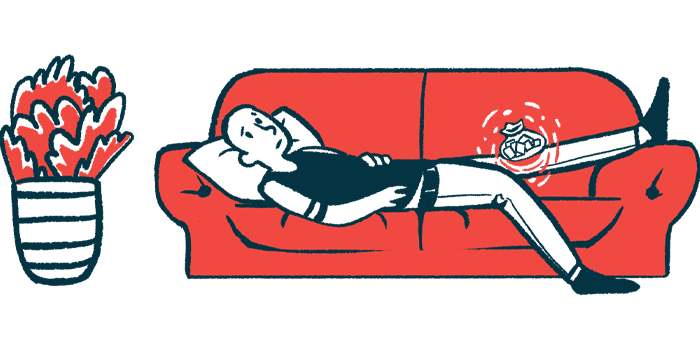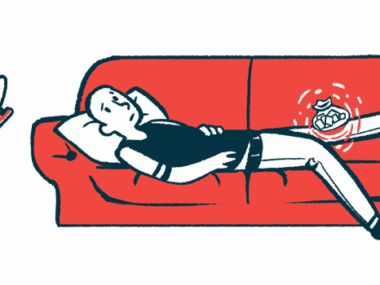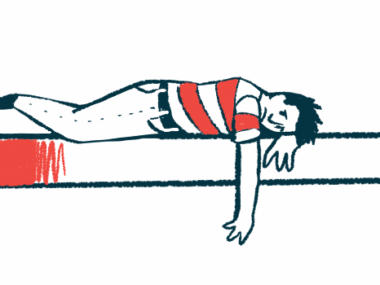hEDS pain can be widespread and also affect mental health of patients
Study reveals complex ties between intense body pain, psychological symptoms
Written by |

For people with hypermobile Ehlers-Danlos syndrome (hEDS), intense pain in several body regions correlates with symptoms of depression and pain-related anxiety, a study reports.
Depressive symptoms were associated most strongly with pain intensity in the lower extremities and in the abdomen. “This is the first study on patients with hEDS that elucidates the multisite pain symptoms and their interrelation to psychological symptoms,” researchers note.
The study, “Pain intensity in anatomical regions in relation to psychological factors in hypermobile Ehlers–Danlos syndrome,” was published in the Scandinavian Journal of Pain.
In EDS, genetic mutations cause problems in connective tissues, potentially affecting the structure of joints, skin, blood vessels, and organs. The most common type is hEDS, which typically leads to symptoms of fragile skin and overly flexible joints.
Nearly all people with hEDS experience pain
Up to 97% of people with hEDS experience pain, often across several areas of the body. “In patients with hEDS pain often impairs daily life and social interactions moderately to severely and relates to lower health-related quality-of-life and greater psychological distress such as anxiety and depression, when compared to healthy individuals,” the researchers wrote.
While pain is a risk factor for depression and anxiety, these psychological symptoms may also, in turn, worsen or lead to pain. However, specific features of pain in hEDS are complex and not well-understood by clinicians. Likewise, how pain in specific body regions relates to mental health conditions has not been studied, according to the scientists.
The study recruited 81 people with hEDS to complete a questionnaire about pain across seven anatomical areas: the chest, abdomen, head, upper extremities, neck, lower extremities, and back. Depression was assessed with the Beck Depression Inventory, version 2, and anxiety with the Pain Anxiety Symptoms Scale. Participants had a mean age of 39.5 years, and the majority (96.3%) were female.
Nearly all participants (96.3%) experienced pain in all of the anatomical areas covered by the questionnaire. The remaining participants reported pain in six of the seven areas. On a scale of 0-10, the mean rating for pain across all body areas was 4.8. Back pain was rated as the most intense at a mean of 5.99.
As for depression, 39.5% of the patients had minor depression, 22.2% had mild depression, 22.2% had moderate depression, and 16% were severely depressed.
Overall levels of pain correlated significantly with scores of depression and pain-related anxiety. Similar patterns occurred when examining individual body parts, and more pain was generally associated with worse depression and anxiety.
Depression correlated strongly with lower body pain
While both depression and anxiety correlated significantly with pain in the lower extremities, this correlation was strongest for depression.
“Pain intensity in the lower extremities impacts the ability to move and perform daily life activities, and the loss of valued activities could explain the relations to depressive symptoms,” the team noted.
For anxiety, correlations were also significant for pain in the back, neck, chest, and head. The symptom burden in hEDS may make patients more prone to anxiety. Also, higher levels of anxiety may contribute to the experience of pain.
“These bidirectional relationships between experienced pain and anxiety may explain why total pain has the strongest correlation with pain anxiety in our study,” the team wrote.
The only body area for which pain didn’t correlate with psychological symptoms was the upper extremities, which was in contrast to previous research. “This clinically interesting finding warrants further study,” the investigators wrote.
The study’s limitations included the susceptibility of bias in the participants’ self-assessments, the team noted. For hEDS, in which pain appears to be widespread and variable, reporting of pain may be confusing. Regardless, continuing to probe the relationship between pain and psychological symptoms in different anatomical areas may yield clinical insights.
“A deeper understanding of behavioural factors and recognising the critical significance of pain intensity and pain location can equip healthcare professionals to develop suitable therapeutical interventions for patients with hEDS,” the researchers wrote.







